V for Vendetta
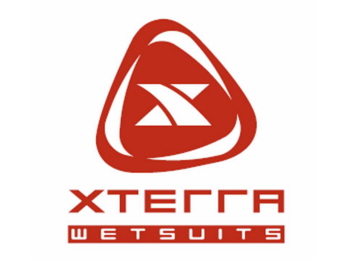
Xterra’s new Vendetta wetsuit blends new technology with proven features to provide an offering that allows you to take aim at your personal bests. On the newness front, Xterra takes full advantage of Yamamoto’s new #40 rubber, with every one of the Vendetta’s numerous panels being made of the super stretchy stuff. In the can’t-get-it-anywhere-else department, Xterra makes several of the panels – all of the ones that make up the front of the wetsuit of their exclusive XterrAir rubber. Utilizing a technique originally seen on some panels of Orca’s Apex suits, the XterrAir neoprene is made by taking a sheet of that #40 rubber and punching a lot of little holes in it. This “neoprene mesh” is then coated on the outside with the standard SCS coating and on the inside with whatever liner material is used. The idea is that you get a whole lot more air in a given volume of neoprene and therefore more buoyancy, and buoyancy is the name of the game. International triathlon rules limit the maximum thickness of rubber in a wetsuit, so XterrAir is a creative way to try and cheat this rule and get more buoyancy out of those five millimeters.
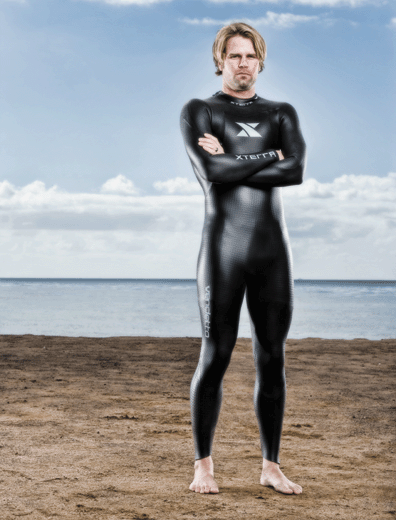
Outside of access to a dunk tank, it’s pretty hard to measure the exact buoyancy of a suit. The Vendetta certainly feels slightly lighter than the entirely #39 Vector Pro X2, but I’m not sure how much lighter it is than the same suit made of standard #40 rubber (sans “XterrAir”). So, in a somewhat disappointing bit of non-quantitative analysis, I was stuck with such inferior measuring tools as how the suit felt in the water. C’est la vie. The one other area where the Vendetta departs from Xterra’s other suits is with the inner lining textile. Previously, Xterra’s all were lined in the trademark red 6006 textile. The Vendetta is lined with the new 8008 textile, which according to Xterra is much more hydrophobic than it’s previous standard textiles. The more water the lining takes on, the less net buoyancy the suit has. So from that perspective, it’s not the dry weight of the suit that really matters, it’s the wet weight. Clearly Xterra’s primary focus with the Vendetta was improving the buoyancy over it’s previous top end suit – the Vector Pro X2. With all the fancy features-that-aren’t-really-features being added into suits, buoyancy is a safe bet for an improvement. More buoyancy generally means more fast, and we all know that more fast is a good thing.
As mentioned in our discussion of rubber, the #40 rubber is less dense than the #39 which is less dense than the #38. But in each case, the reduction in density is accompanied by an improvement in flexibility. This is sort of a fortunate coincidence, though perhaps not really a surprising one given the nature of how neoprene is actually made – by injecting air into rubber, so more air equals less rubber means more stretchiness. Think of a thin rubber band versus a thick one. The only difference with neoprene is that those rubber bands are the same thickness, but air makes up the difference in volume. Were this not the case, wetsuit manufacturers would be in a bit of a bind, since how do you draw the line between buoyancy and flexibility? Of course, they actually do run into this exact problem in certain places on the suits, since it is not only the density of the rubber that affects it’s flexibility, but also the thickness. 2mm rubber is much more flexible than 5mm rubber. But what about 1.5mm as compared with 2mm? How do you decide then? This particular question rears its ugly head in one area in particular – the sleeves/shoulders/lat area of the suits. Thinner rubber here means a great range of motion. Thicker rubber means more buoyancy. So it presents a complex problem. This is, in all likelihood, probably THE dilemma in the wetsuit business. Well, this combined with how to tailor the sleeves with regards to number of panels, shape of said panels, etc. If people like the way a suit feels in the arms and shoulders, they will probably like the suit. If they don’t like the sleeves, regardless of anything else, they won’t like the suit.
Xterra approaches the sleeves from a “more is better” approach to paneling and a “less is better” approach to rubber thickness with full 1.5mm sleeves/shoulders/lats. More panels allows for more contours, more shaping, more precision in terms of how the sleeves will fit. But is also means more seams. And seams don’t stretch. Well, they stretch but not nearly as much as the rubber does, especially nice and thin 1.5mm rubber. So if you are going to have a lot of panels, then where you put the seams for those panels becomes extremely important. And Xterra does a fantastic job at striking this balance. The sleeves of this suit are among the most intricately paneled sleeves I’ve ever seen on a wetsuit. And they are among the most comfortable. The sleeves really moved with the natural motion of my stroke. They had a small, but distinct, “catch panel” that’s rather simple (in a good way) and easy to align, making putting on this suit a breeze in terms of getting it to fit right. This is really the thing that comes to mind first when describing this suit – the sleeves. And I think the sleeves are good enough that if you were in the market for a suit, I’d say take the Vendetta out and see if it fits. Fit is a unique element of a wetsuit. But good sleeves seem to be more universal, as they don’t seem to depend nearly as much on body type.
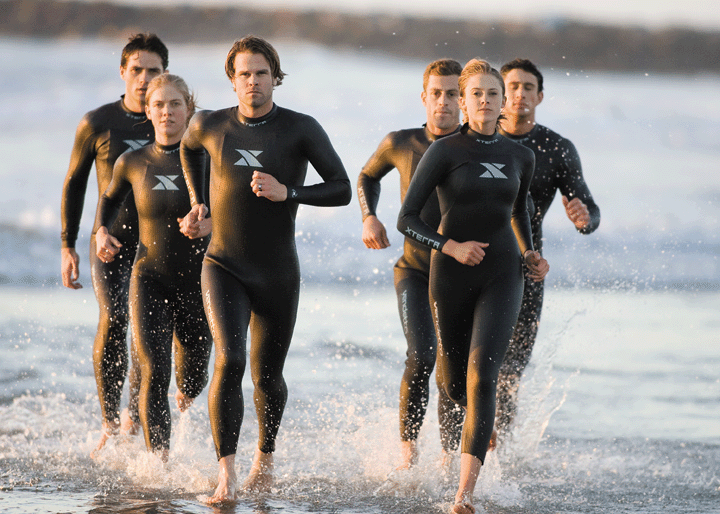
As complexly as the sleeves are designed, the torso of the suit is equally simplistic in it’s cut. Ironically, were I to pick the real weak point for this suit, it would be the fit through the torso, specifically, the lower back. However, I recognize that this is also the area that is probably the most related to body type. So I’m perfectly willing to admit, and even more than that really want to emphasize, that this could be a problem for ME in this suit. But in the particular area in question, specifically the back of the suit, Xterra uses far fewer panels than many of its competitors. I actually found this a bit surprising. Clearly they understand how to take advantage of paneling to improve fit, since the sleeves are such an extraordinary example of this. But the back area really lacks in this area. I felt like the suit was too stiff in the way it was connected. The movement of my scapula had way too much influence on the movement of my legs, and vice versa. Especially over my tailbone, I found the suit moved a lot, rather than flexing. I could feel the zipper shifting left to right as I swam, rather than feeling as if the suit shifted and flexed with me. At the very upper end of the height limit for the suit size I was swimming in, and right in the middle of the weight range, it is entirely possible that I simply didn’t fill-out the suit enough. That’s why it’s important to try on a suit for yourself. But regardless, I think a bit more paneling through the back would improve the suit. I think the #40 rubber poses a special challenge here, and while trying to do my best to keep this review to being about THIS suit, I will say that I’m not sure, at least through the back, that the rubber really was an improvement in terms of how the suit fit. One of the next reviews I’ll write is on the #39 Vector Pro X2, and at the risk of jumping the gun, that suit is more different than I expected it to be. Not necessarily better or worse, just much more different than I thought given that it’s quite similar in many areas except for the rubber used.
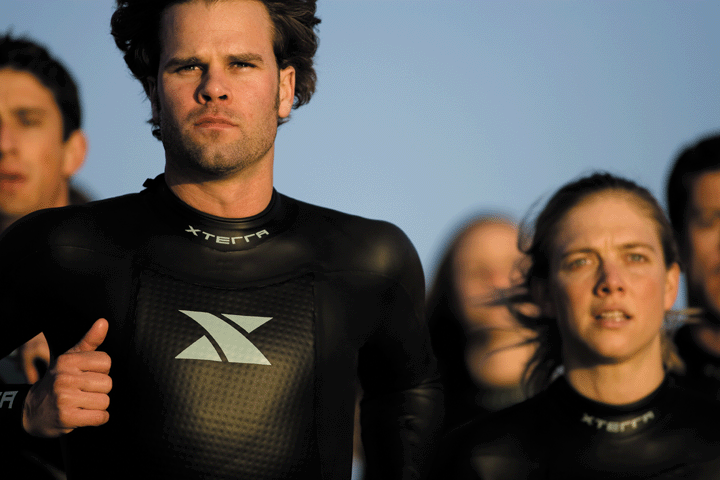
While we’re on the topic of things – like our torsos – that make you and I beautiful and unique snowflakes, let’s talk about the collar. Collars are the things that people probably love or hate the most about a wetsuit. Xterra goes for ultra low profile collar on their suits. It’s a very soft, very flexible collar without any seams where you don’t want them. It doesn’t come anywhere near your adam’s apple (if you have such a thing; I guess for you women we’ll say eve’s… well, I can’t think of a fruit that starts with “e,” so we’ll just go with “your neck.”). From that point of view, which we will call, using the standard medical terminology, “the front,” the collar is very well executed. However, the problem with these ultra low collars is in “the back.” This is where the zipper goes. And this is where the suit velcros shut. And this is where, if you have a very low collar, water likes to enter the suit when you are swimming in a nice “downhill position.” Now again, as I had problems with the fit through this area of the suit, it’s entirely possible that you’d have a different experience. However, having swum (swam? swimmed?) in several suits with this sort of collar, this seems to be the cost of doing business if you are very sensitive about things touching your neck. Once you really get swimming, I didn’t notice a lot of water entering the suit, which could be a function of several things, including the suit seating well once I started swimming, but off the start (even a beach start; I didn’t get to pontoon test this one), and by that I mean any time I went from standing to swimming, I found a lot of water came in the back. But, while swimming, I also never had that pressure-on-the-neck-my-wetsuit-is-trying-choke-me sensation either. So it’s a tradeoff. I can appreciate that Xterra has made a decision and done what they think is most important, as opposed to some suits where the collar is just high enough to choke you and just low enough to still let a lot of water in.
The more I swam in this suit, the more I liked the things I liked, and the more I disliked the things I didn’t like. When I would reach before the catch, I felt like the sleeves weren’t even there, which was awesome, but I also felt the back moving stiffly across my spine, which I wasn’t so much a fan of. I really enjoyed that feeling around my neck of not having a wetsuit on, but the rush of water when I’d start a swim was not quite as liberating. But I did find the nice features extremely nice, whereas the things that bothered me were the sort of nitpicky things that would bother someone who rights absurdly long and overly detailed reviews of wetsuits (that person will remain namelss). The suit is also remarkably soft, in the most literal way. The rubber is very plush, which segways us nicely into something – one thing – that I really did and did not like – the #40 rubber. Xterra is, as they are about many things, very up front about this. On their website, they list the Vendetta as having low-medium durability. I can see that. The rubber is very flexible, and if you are on the low end of a size, I can easily see the suit stretching out rather quickly. I also had to be very careful putting the suit on (I kept my fingernails trimmed almost down to the quick when doing these reviews), and while I did put only a single small tear in the suit during a whole lot of swims, I could see how it was a suit that you couldn’t just treat like a rented mule. On the flip side, both the liner and the rubber itself really felt incredible. It’s a very, very supple suit. That’s the best word for it. And there are the obvious pluses and minuses to that.
After many strokes, I came away really liking a lot of things about this suit, while also seeing some areas where, at least for me, the suit was not the best. But every time I race, I’m amazed at the variety of shapes and sizes we all come in, so just because my (what did I call myself last time?), um…, “storklike” physique didn’t fit perfectly into the suit, that doesn’t mean I’d cross it off the list of “good suits.” If you do take it for a swim, which is really how you ought to test a suit, I hope that the I’ve given you some things to look for and think about in a quasi-quantitative way.
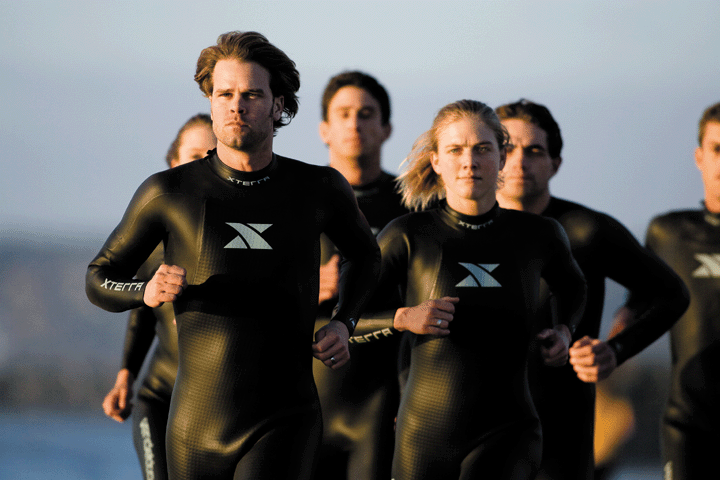
Beyond the fit of a suit, there is, of course, the fact that you may, on occasion, have to deal with the people that sold it to you for repairs, questions, etc. As I mentioned, I appreciate that Xterra owns up to the lack of durability on this particular suit. That’s something that isn’t really a feature of this suit, but it is something which is representative of the company, and I want to spend a little bit of time talking about that. In an effort to really do a thorough job (“I’m a good man, and thorough.” If anyone knows the movie, put it in the comments.), I actually read the “manuals” that came with the suit. Xterra’s manuals are written in English – good English, are easy to understand, and also actually offer some surprisingly good tips on how to put on and take off your wetsuit, something really does seem to mystify an astounding number of triathletes. I also found the folks there to be extremely helpful and friendly. Now of course, I’m writing a review of their suits, so it’s possible I was getting the celebrity treatment, but I had my experience confirmed by a lot of other folks. The people at Xterra are good people. Of course, I think the people at most triathlon companies are good people, it’s too small a world to really be an ass, but I think it is still something worth applauding. If you decide that the Vendetta is on your short list, and you visit XterraWetsuits.com, and click “Contact Us,” you’ll hear back from a real person, who cares about the product he (or she) wants to sell you. And I found that to be a rather pleasant discovery given that I only set out to get some cool gear sent my way for testing.

